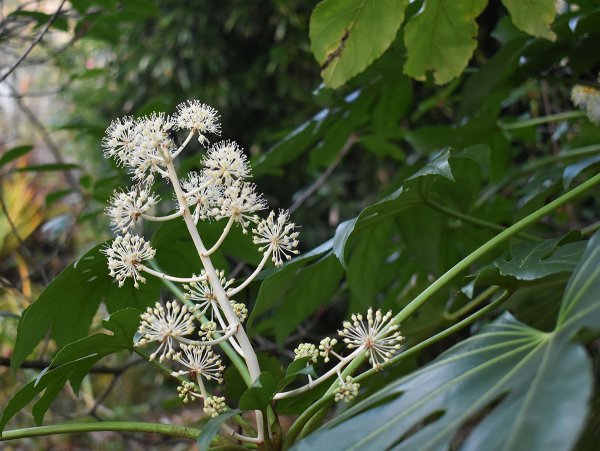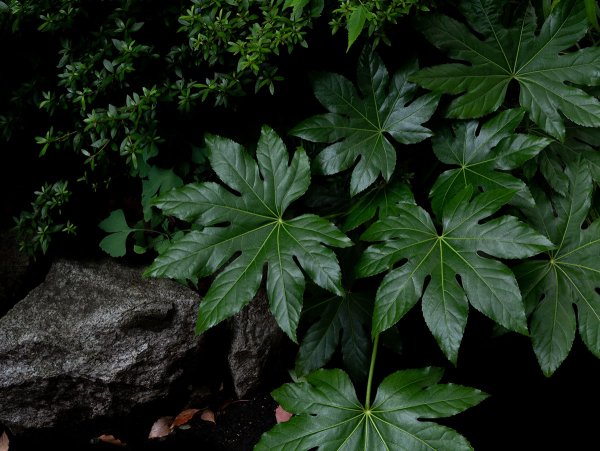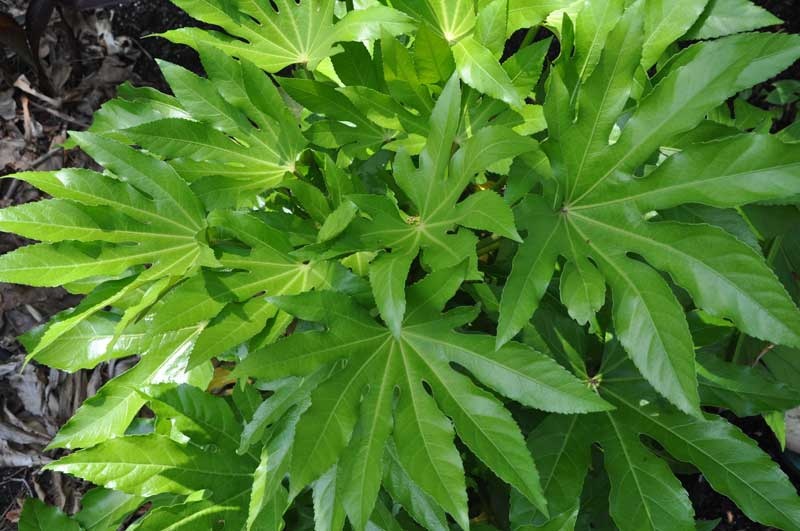Fatsia has huge, up to 12 in wide leaves that are deeply lobed and slightly serrated. Petioles, or leaf stems, are quite long, and hold the leaves up and out with the plant growing to heights of about 8 ft and about half as wide. The upright stems are covered with prominent leaf scars and mostly un-branched. The weight of the leaves tends to make the plant list to one side or another.
Flowering season is fall, but plants must be mature to bloom. Flowers are white, held on a white stalk in small terminal clusters and followed by small, fleshy black fruit. Neither adds much to landscape appearance, and may be almost overlooked. This plant is mainly grown for its outstandingly attractive foliage.

Fatsia Blooming

Fatsia Foliage

Fatsia is a good courtyard or patio plant. Because of its extraordinary bold landscape effect, it might require a little imagination to figure out how to get the most effect from this plant! The effect is easily diminished by placement too close to other plants that could compete for attention. Fatsia is used in Japanese gardens. It can be striking against a light colored background with a fountain or statuary piece in front, especially at night with illumination.
Additional Classification Data
Family: Araliaceae
Genus: Fatsia
Species: Japonica
Cultivar: None Identified
Hardiness Zones
USDA Zone 7a: to 0 °F
USDA Zone 7b: to 5 °F
USDA Zone 8a: to 10 °F
USDA Zone 8b: to 15 °F
USDA Zone 9a: to 20 °F
USDA Zone 9b: to 25 °F
Plant Height
Height 4-6 ft.
Height 6-8 ft.
Height 8-10 ft.
Height 10-12 ft.
Light Exposure
Light - 10% to 40% Shade
Light - 40% to 60% Shade
Light - 60% to 80% Shade
Growth Rate
Rate - Fast
Rate - Moderate


